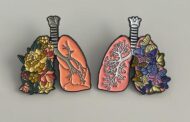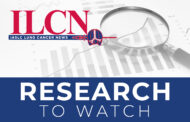
Angus Pratt, MBA
For the first time in many years, patients with late-stage lung cancer are experiencing a major improvement in treatment options. This comes with promise as well as challenges. At diagnosis, patients are often still given a discouragingly poor prognosis based on historical medical statistics. They are also told of recent innovations in testing and treatment, but can find it hard to separate the hope from the hype. Each patient’s case is different; most require a unique approach. Unlike Henry Ford’s sentiment—any customer can have a car painted any color that he wants so long as it is black—one size does not fit all in lung cancer treatment. However, personalized treatment can be onerous for medical systems that depend on standardization, such as insurance companies. Rapid treatment evolution, medical jargon, and economic resources are all hurdles for the patient.
First, let me tell my EGFR story. In June 2018, my phone rang with the cancer clinic ID. Was the radiation technician changing my appointment again? I was in the middle of 6 weeks of chemotherapy and radiation for aggressive curative treatment of stage 3C lung cancer. It turned out to be my oncologist calling, excited to tell me that I was EGFR-positive. I appreciated the call, but had no idea why he was so exuberant. After reading online, I was even more baffled.
However, 9 months later, when my disease progressed despite treatment with durvalumab, I learned what being EGFR-positive meant. I began treatment with afatinib, and 3 months later, my oncologist walked into the exam room with the results of my first follow-up CT scan of my tumor: “Shrinking and disappeared.”
My whoop of joy echoed through the halls of the cancer clinic. Almost 3 years later, I am still hearing, “The spot we were watching has resolved,” and I am happy.
Beginning with basic terminology, language is a barrier for many patients. Different medical practitioners use different terms for the same thing. “Genetic testing,” “biomarker testing,” and “genomic analysis” are all terms to describe the search for therapeutic targets that can help determine treatment. However, many people think of “genetics” as relating to heredity, and “genomics” for many patients brings up visions of 23 and Me or Theranos. What patients often do not immediately understand is that targeted treatment focuses on oncogenic alterations in the tumor itself. Referring to these alterations uniformly as “biomarkers” would keep the language simple and avoid confusion.
In the beginning, biomarker testing looked only for the EGFR mutation. Now, next-generation sequencing looks at a vast range of potential alterations to the genome of the tumor. Current research differentiates oncogenic driver DNA alterations from passenger alterations. Add proteomics and RNA gene alterations, and the biomarker picture gets complicated fast. Instead of a clear-cut, advanced-care planning package, oncologists hand patients newly diagnosed with lung cancer a tumor genomic analysis. It looks like alphabet soup: EGFR, ALK, ROS1, RET, and more recently MET, KRAS, BRAF, and HER2 have all come onto the treatment scene. From that analysis, oncologists offer a range of options for treatment. Lung cancer is one of the most heterogeneous solid tumors. The U.S. FDA recently approved OncoKB, an extensive database of genetic variants, from Memorial Sloan Kettering Cancer Center. It currently shows 24 potentially actionable mutations for lung adenocarcinoma, with 50 separate drugs available for treatment of those mutations or fusions.
At diagnosis, the patient is struggling to come to terms first with the serious prognosis itself. In that moment, the nuances of targeting and treatment options are often lost. The patient wants treatment to begin as soon as possible, but it takes time to get the samples and analysis needed to design an effective treatment plan. Getting a large enough biopsy sample is imperative. Analytics are becoming more rapid, accurate, and cost-effective, and can make use of smaller samples and in some cases liquid samples. The financial resources required for the initial detail are substantial, but essential in determining appropriate treatment directions. The emerging challenge is for the same resources to be available at the time of disease progression, as often a new driver emerges at this point.
The mystery of why some patients respond well for a long time on targeted therapies and others cannot tolerate even a few months of treatment often leaves patients and doctors baffled and despondent. Oncologists specializing in lung cancer keep up with the latest developments. Unfortunately, I have observed that large health systems and providers such as insurance companies do not react as nimbly and may deny coverage of expensive diagnostics and treatments.
When I began treatment with the second-generation drug afatinib, my oncologist gave me a handout for a better treatment, osimertinib. Health Canada had approved the drug, but medical insurance did not yet pay for it. In trying to understand why that was the case, I began to better understand the limitations of the drug-approval process. Beyond medical bureaucracy, researchers find it difficult to conduct effective clinical trials. Despite the large numbers of people diagnosed with lung cancer each year, studies with small cohorts, late-stage diagnosis, and poor survival combine to make amassing evidence hard. Realizing the promise of personalized medicine means overcoming these investigational challenges. Partnering with specialized tumor-based patient groups may provide ways to address and overcome these obstacles.
These are some of the hurdles faced by patients newly diagnosed with lung cancer. But patient research advocates can assist in bringing forth changes. Find out from us what language would be more accessible and put us to work helping other patients understand their treatment choices. In addition, encouraging patients to speak up in the face of restrictive financial coverage will allow us all to realize the promise of personalized medicine.





